
If you’ve been following me for a while, then you know my love for abura soba, a lesser-known brothless ramen that originated in Tokyo, Japan. While the translated name “oil noodles” isn’t the most appealing, these addictive spicy pork noodles finished with chili oil and an acidic punch of rice wine vinegar quickly became my most frequently-eaten dish throughout 4 separate trips to Tokyo.
So with the new season of the Japanese reality TV show Terrace House on Netflix, I decided it was time to try and recreate the abura soba I’ve come to love!
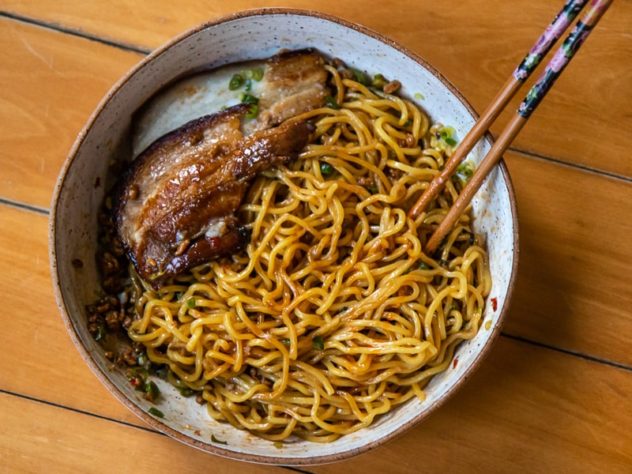
What is abura soba?
This brothless ramen is made up of several key components:
- thick, chewy ramen noodles that sit on top of…
- tare, a Japanese sauce made from soy sauce, mirin, garlic and other ingredients (I simplified mine to minimize the ingredients needed). This gets mixed with oil or pork fat and red miso paste to flavor your noodles and bring that umami bomb to your mouth
- marinated ground pork seasoned with soy sauce, mirin, and tobanjan/doubanjiang, a Chinese spicy bean paste that’s also an umami MVP
- chashu or Japanese braised pork for ramen
- either an egg yolk or onsen tamago, a Japanese method of slow-poaching an egg in its shell to produce a cooked egg with a silky white and creamy yolk that will turn into a velvety sauce for your noodles.
- scallions and dried shredded nori (you could also add menma aka bamboo shoots but I forgot to buy them when I made this 😅)
- chili oil and rice wine vinegar to taste – I personally drown my noodles in both of them because I am a fiend for spicy, acidic flavors

To make your abura soba, you’ll start with the chashu. I was losing sunlight to shoot my photos, so I didn’t have the time to slow braise or roast the pork for a few hours as your typical ramen shop would. Instead, I gave my hunk of pork a quick marinade before roasting it for 30 minutes while preparing the rest of the ingredients. It won’t produce the most tender results, but it’s tender enough to bite through and good in a pinch. You’re welcome to roast it at a lower temperature for even longer or try following a slow braising recipe if you have time to produce a more tender chashu. You could even skip the chashu if you wanted to, but we loved having the slices of it to remind us of the bowls we found in Tokyo, and you’ll boil the remaining chashu marinade to create the tare or sauce base for your brothless ramen.
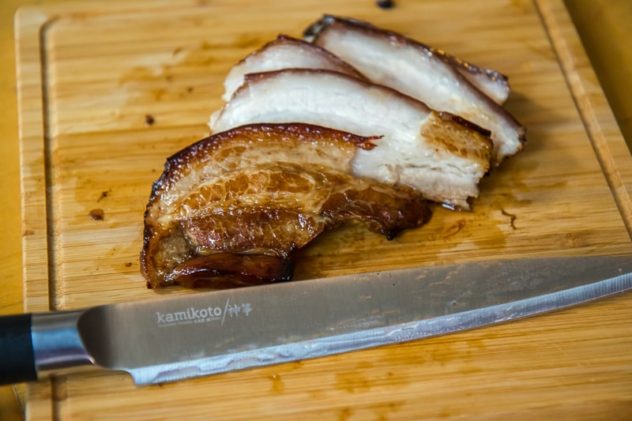
As far as the other ingredients, you should be able to find all of the sauces at your local Asian supermarket or even on Amazon (where I’ve linked to for most of the ingredients), but finding quality noodles and eggs may be tricky. I was lucky to have a Japanese supermarket here in Hong Kong called Aeon Style that’s a godsend for finding ingredients. Not only did they have their own private brand of fresh thick ramen noodles that had an awesome, chewy texture when cooked, but they sold Japanese eggs with theee most orange yolks for a mere US$3.50 for 10 🤯 Those outside of Asia can find similar orange-yolked eggs by purchasing farm-fresh eggs from a local farmers market or from a supplier like Happy Egg Co.

Try finding fresh noodles like the Sun Noodle brand that are used in the best ramen shops in the US or look for thicker wheat-based dry ramen noodles. Don’t fret if you can’t find Japanese eggs with orange yolks! Regular eggs that are slow-poached like Japanese onsen eggs will still give you the velvety texture you want to coat your noodles, and the actual abura soba shop I frequent in Shinjuku even uses regular eggs. I used this recipe to make mine, and while it says you need to use 4 eggs, I had no issues following the instructions for my 2 eggs, so I’ve included it in the full recipe below. If you are making 4 servings, then of course you can simply double my full recipe.
To assemble your bowls, you’ll divide the tare, vegetable oil, sesame oil and red miso paste into 2 bowls, then top that with your cooked noodles, seasoned ground pork, chashu and your onsen egg in the middle. Shoutout to my friend Val/Hungry Mosco for this gorgeous ceramic bowl!
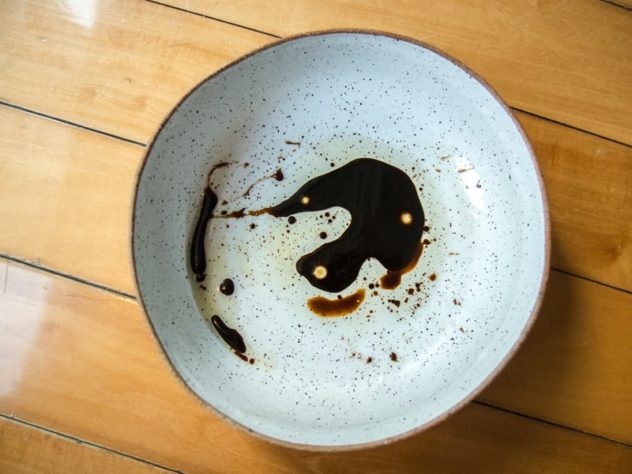
For garnish, you’ll want to add dried shredded nori and a small handful of chopped scallions to each bowl, which will add perfect fragrant notes to the rich, meaty bowl.
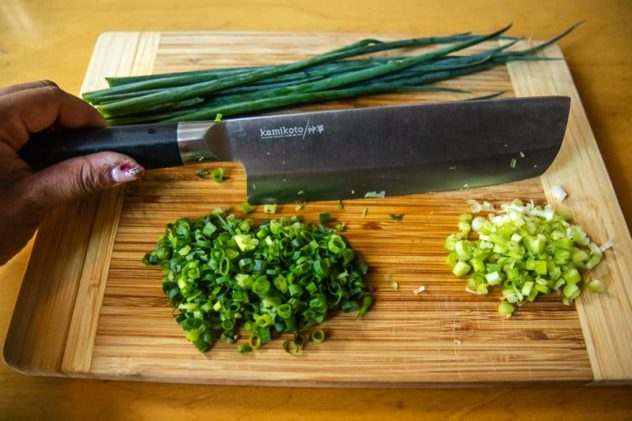
You could also add bamboo shoots to truly mimic Tokyo Abura Soba’s version, or try it with my fave Japanese condiment yuzu kosho for some zing. And of course, you’ll serve the bowls with your bottles of chili oil and rice wine vinegar so you can keep adding more to taste.
This homemade abura soba took me right back to my first memory having it in Shinjuku after too many drinks at the Robot Restaurant. I hope my recipe can transport you to Japan too! Pin the image below to save this recipe on Pinterest 👌🏼
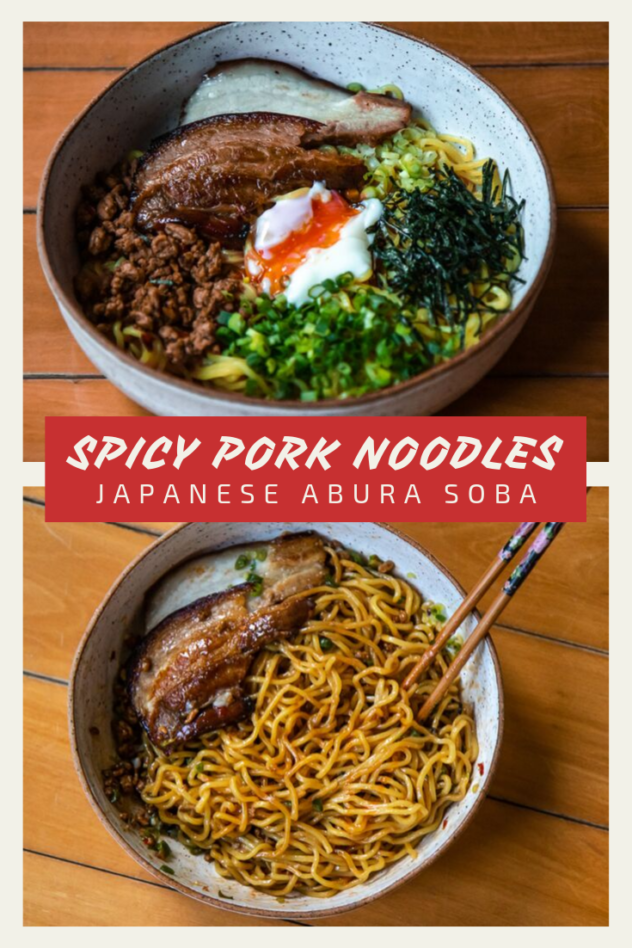
Abura Soba – Japanese Spicy Pork Noodles
Ingredients
For chashu marinade: (*see Notes if omitting chashu)
- 5 oz. thick skinless pork belly or pork rump
- 3 tbsp soy sauce
- 1 tbsp mirin
- 1 tbsp sake (optional)
- 1 tsp sugar
- 1 clove of garlic, smashed
For the tare:
- 1 tbsp rice wine vinegar
- 2 tsp red miso paste
- 2 tbsp sesame oil, divided
For the onsen eggs: (substitute with a raw pasteurized egg yolk)
- 2 cold eggs, Japanese or farm-fresh eggs if you can find them
- 1000ml of boiling water
- 200ml of cold water
For the ground pork:
- 1 tbsp vegetable oil
- 2 cloves garlic, minced
- 1 inch piece of peeled fresh ginger, minced
- 6 oz. ground pork
- 1 tbsp Tobanjan / doubanjiang (spicy bean paste)
- 1 tbsp soy sauce
- 1 tbsp mirin
- 1 tsp sugar
For the ramen:
- 2 servings thick ramen noodles
- 1/2 cup chopped scallions, green and white parts separated
- 1/4 cup dried shredded nori
- 2 tbsp. raw yellow onion, chopped
- Menma (bamboo shoots) for garnish (optional)
- Rice wine vinegar and chili oil to taste
- Yuzu kosho to taste (optional)
Instructions
- Make your chashu. Follow this recipe or for a quick shortcut way, preheat oven to 350 degrees F, 176 degrees C for your chashu. Combine the soy sauce, mirin, sugar and smashed garlic for the chashu marinade in a bowl. Add pork belly and coat all sides in the marinade, letting it sit for at least 15-30 minutes.
- Transfer the pork to a baking tray, reserving the rest of the marinade, and roast the pork for 30-40 minutes with the fat side up.
- Marinate your ground pork by combining it with the Tobanjan, soy sauce, mirin, and sugar. Set aside.
- Make your tare by whisking together the leftover chashu marinade, rice wine vinegar & miso paste in a saucepan. Bring it to a boil over medium heat, then simmer for 1 minute. Divide the tare and sesame oil into 2 bowls big enough for your ramen and set aside.
- Prepare your other ingredients by peeling and mincing the garlic and ginger for the ground pork, set aside. Chop the scallions, separating the white and green parts, set aside.
- Make your onsen eggs by boiling 1000ml of water in a small, heavy-bottomed pot covered with a lid over high heat. When the water reaches a vigorous boil, remove from heat and add the 200ml of cold water and your eggs from the refrigerator, cover with a lid and let sit in the water for 17 minutes. After time is up, carefully remove the eggs from the water with a slotted spoon and set aside.
- Your chashu should also be done cooking now. Remove it from the oven and let it rest while you prepare your other components.
- Cook your ground pork. Heat 1 tbsp of vegetable oil over low heat and add the minced garlic and ginger, cooking for 2 minutes until soft and fragrant. Increase heat to medium and the marinated ground pork, stirring well to combine and cooking while stirring for 5-7 minutes until pork is well-browned. Set aside.
- While cooking your pork, boil water for your noodles. Cook according to package instructions, draining excess water.
- While your noodles are cooking, return to your onsen eggs and carefully crack each one into its own small bowl with warm water to rinse off any excess egg white that may not have set. Slice your chashu into thin slices.
- Assemble your bowls by splitting your cooked noodles between each bowl, then top each one with half of the ground pork, chashu, scallions, dried nori, raw onion and menma in a ring. Use clean hands or a slotted spoon to carefully drain the excess water from the onsen eggs and add an onsen egg to the middle of each bowl.
- Serve with chili oil, rice wine vinegar and mix well to combine all ingredients, tasting and adding more chili oil and rice wine vinegar as desired. Optional: add 1/4 tsp. yuzu kosho at a time to achieve desired taste. Enjoy with a cold Asahi or sake!
Notes
*You can make this dish without the chashu by using the marinade ingredients in your tare. Simply combine 2 soy sauce, 1 tbsp mirin, 1 tbsp. sake, 1 tsp sugar and 1 crushed clove of garlic with the 1 tbsp rice vinegar & 2 tsp miso paste for the tare, and follow the instructions in step 4 to make your tare
**Instead of onsen eggs, you can simply top your abura soba with a raw egg yolk, which will cook into the sauce from the residual heat of the noodles when you mix everything together
If you make my abura soba recipe, I’d love to see the final product. Tag your photos and stories on Instagram with @indulgenteats and #indulgentrecipes so I can see them!

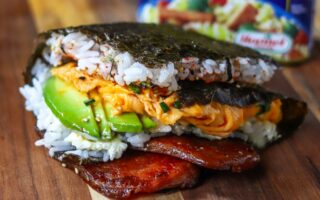

Lovely! I’ll try this one as it looks like the perfect thing to bring to work. Thanks for sharing sucha great, recipe 🙂 Cheers!